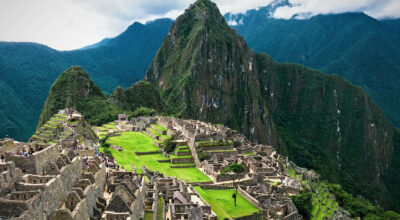Bratabanda : What is Bratabanda and why it is necessary to do it!

What is Bratabanda and why it is necessary to do it!
Bratabanda :In Sanskrit, vrat means promise and bandh means bondage. It is also a religious process of adoption, which is considered a symbol of fasting. The fast of a child is usually done in childhood, after the child reaches the age of 8 years, he is considered to be able to perform the act of celibacy and he is usually fasted at this age. Therefore, this work is also called Upanayan.
Shaving and wearing are the special indicators of fasting. Even in some castes where no one wears it, there is a tradition of wearing it like a Bratabanda . Worship is done in Agni Kund just like in any Hindu religious function. Under this pooja, the child’s guru recites the Gayatri mantra to the child, under which the child looks at the Guru’s face every year on the day of Guru Purnima.

Bratabanda is done by choosing the day of a special date and its karma starts from early morning. Primary activities include daily deeds, and simple worships. As a symbol of Bratabanda, the child accepts Janai and after that he always vows to follow the daily deeds like eating clean, doing good deeds, accepting Janai, chanting God, chanting Gayatri Mantra, offering Apsani before eating.
The most important rite of the Brahmin caste is ‘Bratabanda’. Another name for this ritual is ‘Upanayan’. Generally, it is believed that karma is performed only after the fast of the son and the marriage of the daughter. This notion is still found in cultural families. The ritual of fasting is considered to be of special importance for two main reasons.
First, as long as the son is fasting, he is considered unclean and is not allowed to sit with the elders and eat and engage in other activities. That is why a person is born twice, the first from the mother’s womb and the second after fasting.
After fasting, he is considered ‘Dwij’. Dwij means to be born by rites.
Hinduism has instructed us to take special care of the sacred, the unholy, the false, etc. Second, it is believed that after this rite, he is sent to the Guru to begin learning. That is why this rite is called Upanayan. Upanayan also means close to the Guru.In ancient times, after the vratbandha rites, gurukula were sent to study.
By staying in the Guru Ashram for a long time, knowledge was acquired with strict rules and conduct. Of the four ashrams of Hinduism, the Brahmacharya Ashram begins with this rite. In fact, after doing karma, a person becomes morally and culturally responsible for his actions. He is also believed to follow his own religion and the dignity of his family.

Similarly, another aspect of the relationship of fasting is that after doing karma, one can do the deeds of one’s parents. This ritual is often considered taboo as long as it is fasted. Due to these various reasons, the ritual of fasting has remained very important in the Hindu Brahmin society. Bratabanda rituals have their own rules and regulations. Which is explained here in chronological order.
Purvang: The day before the main fast is called ‘Purvang’. Purvang refers to the preparation of work before performing major religious works in the Brahmin or Chhetri community. In other words, it can be understood as the beginning of work. In this, detailed planning and preparation is done on how to complete the work with the help of brothers and allies.
The work will not be stopped even if there is no lie after conceiving. After the Purvang, the Mars urn adorned by two married women is worshiped and the Kasar Batar is performed, and as soon as the Purvang is completed, the ground or mandapa is built with the soil dug by unmarried virgins from a clean place.
In the evening of Purvang, scissors, razors, white and black Dumsi thorns on three sides, 27 pieces of Kush, nauni in two brass bowls, curd, cow ghee, red calf dung, three pieces of yellow cloth inside mustard barley, dubo, shrikhand Yogurt is made into three separate handfuls of rice and dung. These bundles are tied by the father or priest to the heads of the bats.
Chhevar: Chhevar is also considered as another important method associated with fasting rituals. On the morning of the Bratabanda, the Pandit sets fire inside the mandapa and Batuk’s father makes seven godanas. Along with various other procedures, three pieces of Kush are placed on the top of the head, then the hair is cut at the site created by the astrologer.

The cut hair is washed in the river with various methods. In the end, the sisters take a bath by rubbing bukuwa on the body of the brother and placing it in a large copper vessel.
Appanyan: On the main day of fasting, after taking a bath, one should sit next to the priest and do three godanas. The meaning of these three godanas is also amazing. It is an act of atonement for various mistakes made by Batuk in his childhood, such as eating indiscriminately, speaking indiscriminately, etc.
The baby is then given a deer skin to lie on. Batuk puts the skin on the shoulder. Wild ginger leaves are applied on the hips. Then a yellow lungi is sewn from the outside. In the right hand is given a stick, dal, rice, a jogi bag to keep. At the end, the shaved head is tied with a yellow cloth.
Meanwhile, the master lets Batuk wear it. After this, both the master and the disciple are amazed three times. Giving mantras is the main part of fasting. After this, Batuk walks around the mandapa three times and begs.At this time, first Batukki’s mother gives alms, then Batukki’s aunt and other relatives give alms. Giving alms is an important part of fasting rituals.
In ancient times, the Guru would take the disciple to the Guru’s Ashram after completing the Bratabanda ritual at an early age. Studying there was possible only by following very strict rules. He used to get up early in the morning and perform various activities and send begging to the householders. The master and the disciple used to cook and eat the begging brought with a very humble feeling.
This process is completed not only for a day or two, but also for the entire Brahmacharya Ashram for about 25 years. In this ritual, it is not customary for the father to give alms. It is customary to place all the material brought by asking, at the feet of the Guru. According to the master’s order, Batuk accepts some things. Then godan and home work is done. After this, new clothes are given to Batuk after bathing.
In this way fasting ritual is performed.At present, it is felt that the essence hidden in the ancient system is weakened in the ritual of fasting. It has been taken only as an act of performing karma or as an act of breaking the law for marriage. Many things have changed with the current social dynamics and changes.
There is a growing trend among the upper class to hold grand parties in big hotels, considering it a matter of social prestige. The lower classes have started taking it only as an act of karma.In the past, Brahmins were confined to their villages, relatives and neighbors. Currently, the caste system is becoming very weak.

At the same time, food and other social activities are becoming more relaxed. Gradually westernization, globalization, modernization, modern education system, migration and other social processes have increased the perception that not only a particular place but also culture belongs to all.
Therefore, it is natural that it is difficult to preserve the old culture. Even the Brahmins who study the Vedas are now finding it very difficult. But even at the time when this culture originated, it was very practical and scientific. Considering the Hindu social life as a hundred years old, the first 25 years of the ashram was taken as a celibate ashram and this ashram was completely set aside for the study of science. With the completion of this ashram, a person would enter the Grihasthi Ashram.
FAQ’S
Prithvinarayan Shah :The Untold History Of Prithvinarayan Shah






